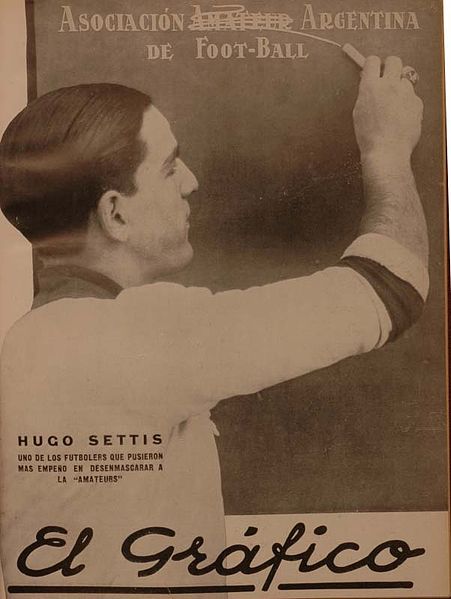Football in Argentina was officially amateur up until 1931. In practice most players were paid. The clubs applied very strict rules regarding the movement of players. Amongst the players the most unpopular of these rules was the ley candado (the padlock law)- this meant that no player could move from one club to another without the first club's consent. This is of course completely understandable in the context of professional, contracted players. But the Argentine players were officially amateurs.
The conflict between clubs and players escalated. A players union-Asociación Mutual de Jugadores- was formed. The two main figures in the union were the Huracán players Hugo Roque Settis and Juan Pablo Bartolucci .
The players went on strike, and even marched to the headquarters of the Government to present their protest to President Uriburu.
The outcome was a structured professional set up, 12 leading clubs openly declaring themselves professional, which led to a culture of proper wages and contracts.
We wanted freedom of contract, we wanted to end the club's exclusive hold on us, and to be able to decide who we played for. We wanted to be free.
Settis
